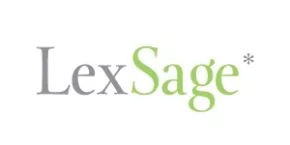We often get asked by non-resident companies for Canada’s sales tax rates. Canada imposes a federal sales tax called “goods and services tax” (or GST). Some provinces have harmonized their sales tax with the GST. The provincial portion is called “harmonized sales tax” (or HST). Some provinces have not harmonized their provincial sales taxes with the federal GST and charge provincial sales tax or retail sales tax on a different base than the GST. Alberta and the territories do not impose a sales tax at the provincial level. You need to charge the correct rate depending on where supplies are made.
Canada’s sales tax rates chart must be changed again as Saskatchewan increases its provincial sales tax rate to 6% as at March 23, 2017. Canadian businesses and foreign businesses carrying on business in Canada must update their systems to reflect the new rate for Saskatchewan. Also, Ontario’s ITC recapture rate reduced from 50% to 25% on July 1, 2017.
Canadian Sales Tax Rates
Chart
As at July 1, 2017
| Province/Territory | Provicial Sales Tax | GST/HST Rate | GST Included in PST Tax Base | Combined Rate |
| British Columbia | 7% | 5% | N/A | 12% |
| Alberta | Nil | 5% | N/A | 5% |
| Saskatchewan | 6% | 5% | No | 11% |
| Manitoba | 8% | 5% | No | 13% |
| Ontario * | N/A | 13% | N/A | 13% |
| Quebec | 9.975% | 5% | N/A | 14.975% |
| New Brunswick | N/A | 15% | N/A | 15% |
| Nova Soctia | N/A | 15% | N/A | 15% |
| Newfoundland/Labrador | N/A | 15% | N/A | 15% |
| Prince Edward Island | N/A | 15% | Yes | 15% |
| Northwest Territories | Nil | 5% | N/A | 5% |
| Yukon | Nil | 5% | N/A | 5% |
| Nunavut | Nil | 5% | N/A | 5% |
* Ontario maintains retail sales tax on insurance and private sales of used vehicles.
The PST rate for Saskatchewan increased from 5% to 6% on March 23, 2017. Saskatchewan also made certain exempt items taxable. Be sure to verify sales tax status.
The GST/HST rate for Newfoundland/Labrador increased to 15% from 13% effective July 1, 2016.
The GST/HST rate for New Brunswick increased to 15% from 13% effective July 1, 2016.
The GST/HST rate for Prince Edward Island increased to 15% from 14% effective October 1, 2016.
The ITC recapture rate (RITC) in Ontario decreased to 25% as of July 1, 2017. The reduced RITC will apply to Ontario HST that is paid or payable from July 1, 2017 to June 30, 2018. Next year, on July 1, 2018, the RITC rate will decrease to 0%.
Steps To Take
- Are you charging the correct amount of sales tax?
- Sales departments/accounts receivable departments that have programmed HST-included pricing will need to update the sales tax rates in their systems.
- Even companies that calculate sales tax separately will need to make sure that computer programs have been updated.
- Are you paying the correct amount of sales tax?
- Payroll departments will need to review invoices in the months following the sales tax increases to ensure that they are being charged the correct amount of sales tax.
- This means not paying the higher rate for property and services provided before July 1, 2016 and paying the higher rate, if applicable, after July 1, 2016.
- Are you claiming the correct amount of ITCs?
- The finance department will need to make sure that computerized programs that break out the amount of HST payable on invoices have been updated to reflect the higher HST rates.
- Are Ontario businesses not giving too much back?
- The ITC recapture rate in Ontario has decreased to 50% from 75%. This means the amount of ITCs that companies can claim may have increased for some large businesses.
- Have you updated your computerized records to reduce the recapture rate?
The content of this article is intended to provide a general guide to the subject matter. Specialist advice should be sought about your specific circumstances.

